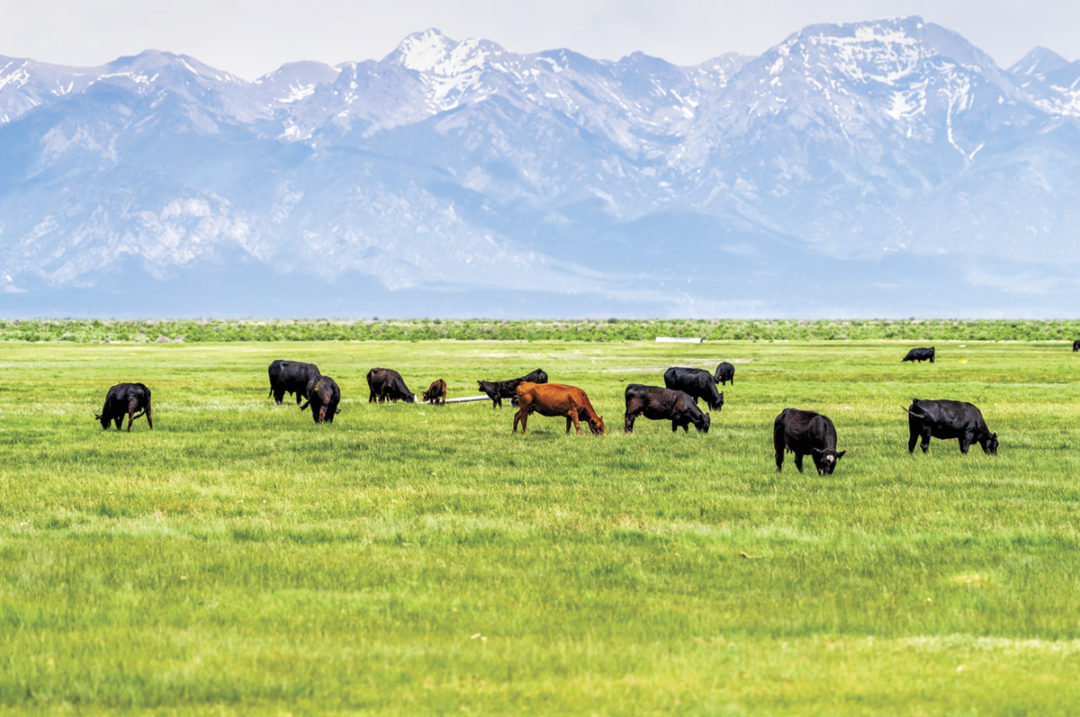When a precious natural resource abounds, individuals or groups often seek it out for their own benefit. Sometimes this endeavor clouds the mind and leads to irrational or perilous decisions.
During the mid-1800s, thousands of people gave up their jobs, families and homes for a chance to strike it rich from prospecting gold. The term “gold fever” was coined to describe this risky pursuit of wealth and success. Due to depletion of the easily accessible gold, extreme competition and market fluctuations, the fever dwindled and broke. Many were left with nothing more than the clothes on their backs.
Lessons learned from the past can be applied to rangeland grazing management. The western U.S. has been struggling with Mother Nature and the lack of adequate precipitation. Drought has caused decreased forage production, livestock herd reductions and an economic burden for many. In some instances, attempts to feed through the drought has led to changes in plant community composition, soil erosion and general rangeland degradation. For a few, irrigated crops were able to be fed just to get by.
However, with every drought eventually comes the rains. The majority of the West has seen record winter moisture with reservoir levels substantially increasing this spring. Grass, a precious resource, is taking advantage of the moisture and inducing rangelands on a new trajectory to ameliorate conditions brought on by drought. It would be easy to be lured into the idea that more grass means more livestock and profits. Caution is warranted to prevent falling into a “green fever” trap.
Under normal precipitation years, perennial grasses produce enough extra leaf mass to support a conservative grazing scenario (31% to 40% use) in arid systems and moderate grazing (41% to 50% use) in semiarid regions. This allows plants to maintain their photosynthetic capacity and build a strong root system for soil nutrient absorption and storage. Root mass is proportional to the amount of nutrients that can be stored in the plant, and these reserves play a vital role in a plant's survival, growth and reproductive success.
During the recent drought, grasses had lower-than-normal production and experienced some mortality. A reduction of above- and below-ground production shifted the plant metabolism from nutrient storage and growth (anabolism) to degradation and root reserve use (catabolism). The time a plant can stay in a catabolistic state (metabolic breakdown) is limited before reserves are diminished and death occurs. If the severity and duration of a drought persists, up to a sevenfold decline in forage production and upward of 50% plant mortality in the arid systems may be observed, even in ungrazed areas.
Similar impacts may be seen across other regions of the West. As greenup begins, forages have switched back to an anabolic state (metabolic building) and need time to replenish their reserves. Grazing management prior to, during and after the drought as well as drought severity will dictate vegetation recovery time.
Grazing durations and intensities will greatly influence a plant's persistence and resilience. In a normal precipitation year and in an arid continuous grazing scenario, it is advised to graze at a conservative intensity, while other semiarid regions could graze at moderate intensities. This will maintain vegetation conditions and optimize animal performance. No one can predict the severity nor length of time a drought will persist. Thus, a drought plan should be in place to match the currently available resources to the number of animals and adjust grazing strategies as to not exceed a light grazing intensity (less than 30%). The plan may also seek to capitalize on a seller’s market by reducing stocking rates early or have a drought reserve pasture to prevent having to sell.
Management strategies coming out of drought should focus on improving rather than maintaining plant conditions through grazing intensity adjustments. A light grazing intensity promotes plant growth and rejuvenation, while conservative to moderate maintains and heavy to severe (greater than 50%) hinder. As a grazing recovery example, when a low to moderate grazing intensity is employed prior to drought, one year of below-normal precipitation will require two years of normal precipitation for adequate recovery. Therefore, it is recommended to use a light grazing intensity after drought or rest the area for at least one entire growing season.
As drought severity and duration increase, recovery time will also need to be extended. In another scenario such as rotational grazing, high intensities are not recommended as the grasses are already stressed. The central focus of rotational grazing should not be on intensity but rather the duration of rest required to enable adequate leaf area production, replenished root reserves and recovered plant densities. No matter the grazing strategy, intensity and duration of grazing before, during and after drought will greatly influence the sustainability and recovery of vegetation.
Green fever is the idea that with abundant grass growth following drought, a livestock producer can capitalize on the opportunity and begin extracting the resource at or above pre-drought intensities. This mindset will ultimately lead to the depletion of rangeland forages, leaving producers with nothing more than the clothes on their backs. Luckily, grasses differ from gold and are a renewable resource. Drought planning and proper management before, during and after a drought will promote good vegetation and soil conditions well into the future. Avoiding the fever and focusing on grass recovery after drought should be the top priority.
In the end, as custodians of the land, livestock producers bear the responsibility of safeguarding the long-term availability of this valuable green resource that sustains their way of life and provides essential ecosystem services upon which society as a whole depends.








